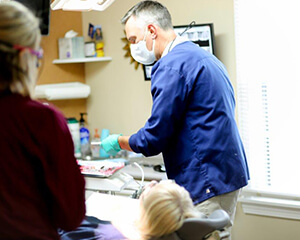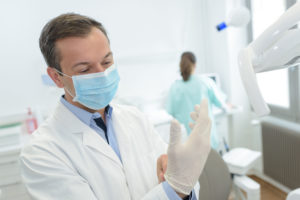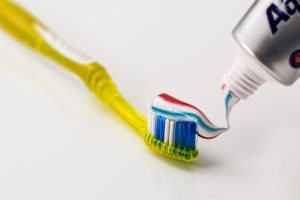J. Peter St. Clair, DMD Blog
WE ARE HEALERS
June 2, 2020
 Dental offices are expected to return to more routine care starting this coming Monday, June 8th. The general vibe in the dental community is optimism, as we embark on a revised version of our normal procedures. We are all looking forward to seeing our patients.
Dental offices are expected to return to more routine care starting this coming Monday, June 8th. The general vibe in the dental community is optimism, as we embark on a revised version of our normal procedures. We are all looking forward to seeing our patients.
Dentists play a key role in screening patients for many disorders relative to overall health, and in providing appropriate referrals into the health care system as needed. Although the importance of integrating diet and nutrition guidance into dental care has been advocated for decades by educators, it continues to be a challenge for many dental providers to put into practice.
HOW HAVE YOU BEEN SLEEPING?
May 26, 2020
Dental hygiene appointments will be allowed to start at the beginning of Phase 2 Monday, June 8th. Dentists have been allowed to see “emergent and likely to become emergent” patients since last week. Many of us have struggled to understand what that means exactly, but I think we are getting closer to “the new normal”.
WHERE’S THE LIGHT IN THE TUNNEL?
May 19, 2020
 As I write this, New Hampshire dental offices have opened their doors for routine dental care, while Massachusetts still struggles to be any more than vague on our plan for re-opening; good thing the virus doesn’t cross state lines. We must still be vigilant in protecting the most vulnerable at this time, but we also need to be mindful that the economy is suffering every hour we are shut down. Hopefully there is a well laid out plan in place to get this State going by the time you read this.
As I write this, New Hampshire dental offices have opened their doors for routine dental care, while Massachusetts still struggles to be any more than vague on our plan for re-opening; good thing the virus doesn’t cross state lines. We must still be vigilant in protecting the most vulnerable at this time, but we also need to be mindful that the economy is suffering every hour we are shut down. Hopefully there is a well laid out plan in place to get this State going by the time you read this.
Do You Have Sensitive Teeth? Find Out Why & What You Can Do
May 18, 2020
 Have you ever experienced a sudden flash of pain in your mouth when drinking hot coffee, eating ice cream, or simply breathing in cold air? This is known as tooth sensitivity, which is a condition that impacts at least 20 million Americans according to the Academy of General Dentistry. Even if the discomfort fades quickly, sensitive teeth can negatively impact your quality of life and oral health. Your Rowley dentist explains what causes this uncomfortable sensation and what you can do to treat it.
Have you ever experienced a sudden flash of pain in your mouth when drinking hot coffee, eating ice cream, or simply breathing in cold air? This is known as tooth sensitivity, which is a condition that impacts at least 20 million Americans according to the Academy of General Dentistry. Even if the discomfort fades quickly, sensitive teeth can negatively impact your quality of life and oral health. Your Rowley dentist explains what causes this uncomfortable sensation and what you can do to treat it.
THE SAFER DENTAL OFFICE
May 12, 2020
 Unless things have changed, we will start to see signs of routine life this coming Monday, May 18th. Among other retail stores and services, dental offices will be allowed to see patients for routine care under guidelines from the Centers for Disease Control (CDC) Occupational Safety and Health Administration (OSHA)l and Prevention, the American Dental Association (ADA), and the Massachusetts Dental Society.
Unless things have changed, we will start to see signs of routine life this coming Monday, May 18th. Among other retail stores and services, dental offices will be allowed to see patients for routine care under guidelines from the Centers for Disease Control (CDC) Occupational Safety and Health Administration (OSHA)l and Prevention, the American Dental Association (ADA), and the Massachusetts Dental Society.
THE COVID-19 CHRONICLES
May 4, 2020
 There are states in this country where dental offices are returning to providing routine dental care. That is not the case here in Massachusetts. At the time of this writing (Wednesday April 29th), the State of Massachusetts has extended its stay-at-home advisory through May 18, 2020. Dental offices will continue to remain closed for non-emergent care at least until then.
There are states in this country where dental offices are returning to providing routine dental care. That is not the case here in Massachusetts. At the time of this writing (Wednesday April 29th), the State of Massachusetts has extended its stay-at-home advisory through May 18, 2020. Dental offices will continue to remain closed for non-emergent care at least until then.
SUPPORT YOUR LOCAL BUSINESSES
April 27, 2020
 There’s a lot more to consider with regards to the steps needed to provide a safe environment when we return to our routine medical and dental appointments following this global pandemic. Unfortunately, it seems there is plenty of time left to discuss these. We are all waiting for more guidelines from the CDC and other professional organizations on any necessary changes that need to occur before and upon opening to patient care.
There’s a lot more to consider with regards to the steps needed to provide a safe environment when we return to our routine medical and dental appointments following this global pandemic. Unfortunately, it seems there is plenty of time left to discuss these. We are all waiting for more guidelines from the CDC and other professional organizations on any necessary changes that need to occur before and upon opening to patient care.
THE BUBBLE DENTIST
April 21, 2020
Last week, the title of this column was a Jon Bon Jovi reference from the 80’s hit Livin’ on a Prayer, hoping that “We’re Halfway There” when it comes to getting back to ‘normal’. As I was thinking of a title this week, the first thing that jumped into my mind was a story I remember about “the boy in the bubble”.
When David Vetter was born in 1971 with severe combined immunodeficiency (SCID), an experiment to keep him alive made him famous. Vetter became known as “The Bubble Boy” after he was placed in a germ-free plastic bubble that he lived in for 12 years.
How Can I Keep My Toothbrush Clean?
April 15, 2020

Because of the COVID-19 outbreak, people are worried about cleanliness more than ever before. The worry of keeping everything clean enough should also extend to your toothbrush. You might be wondering “how can I keep my toothbrush clean” in the age of the coronavirus. That’s why, in today’s blog post, we have written about how to deep clean your toothbrush to keep it as germ-free as possible.
(more…)WE’RE HALFWAY THERE
April 9, 2020
Hopefully you were singing the 1986 hit by Bon Jovi when you read that title. Anything to put a smile on your face these days. The funny, and not-so-funny thing about that title is that I hope we are halfway there. The new “projected” date to resume “normal” business is May 4th. That would put us at about halfway there. Whatever the date is that we go back to work, it still won’t be “normal”.







